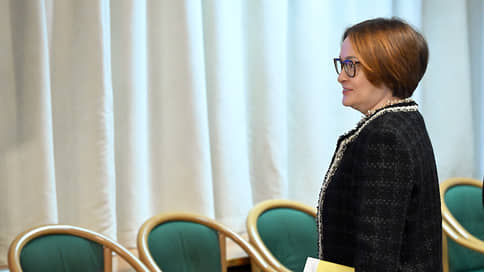What new has become known from the changed format of the Central Bank’s publications on the key rate
[ad_1]

The new format for the Bank of Russia’s publication of information accompanying decision-making on the key rate and macro forecast will apparently increase the predictability of the regulator’s steps, but will make them more thoroughly criticized by analysts. The discussions presented for the first time in the board of directors of the Central Bank about trends in the economy look more complex and contain more alternatives than followed from the previous format of communication between the regulator and society.
For the first time in a long period, the Bank of Russia changed the format comments on decisions on the main issue for the Russian financial market – the key rate. In fact, two new formats are being added to the press release on the rate, to the statement and press conference of the Chairman of the Central Bank. In the case of a key meeting (with the publication of a medium-term macro forecast), the regulator publishes a commentary on it. The decision itself is now accompanied by the Russian equivalent of minutes – an anonymized and structured report on the nature of the discussion of the decision on the rate by the board of directors of the Central Bank.
At the same time, the regulator does not provide a fundamentally new type of information; moreover, there are “sidebars” to the previous format in the form of a report on monetary policy. They will presumably be replaced by separate publications of the works of Central Bank experts.
However, the “Summary of the Key Rate Discussion” (this is the name of the new document) looks more informative from the point of view of the forks of the decision discussed and the positions of individual council members.
Yes, in the first summary — on the Central Bank’s decision on the rate of February 16 — the position of the members of the board of directors who proposed increasing it from 16% to 17% per annum was commented in detail (remember, based on the voting results, it was retained). This is primarily a question about the dynamics of GDP growth potential at the end of 2023 – beginning of 2024 in comparison with the previous version of the Central Bank forecast. Essentially, this is a question of what is associated with stronger output growth in the economy than expected in October 2023 in subsequent months. On the one hand, it could be associated with a faster than expected movement of real GDP growth rates “above” the potential increase, on the other hand, with an underestimation of changes in potential GDP itself. Let us recall that these changes were accompanied by an increase in inventories in the components of GDP and the possibility of interpreting this phenomenon as an “overhang” of inventories of goods was discussed. As a result, discussions at the Bank of Russia came to the conclusion that the “overhang” is an ambiguous hypothesis that should not be accepted as a confirmed fact.
In addition, the summary provides data on factors in favor of a rate increase, such as increased sanctions effects and a decline in exports at the end of 2023.
In the description of the discussion, there are several such forks that make it possible to more accurately restore the logic of the Bank of Russia, suggesting the council’s reaction to changes in actual circumstances between “core” meetings – the previous communication format provided fewer opportunities for this. In particular, such forks in the discussion on February 16 were the dynamics of the reduction in exports by industry and the parameters of its reorientation to the domestic market, the connection between the state of the balance of payments with monetary policy parameters and the ruble exchange rate, and the future impact of changes in the macroprudential policy of the Central Bank on monetary conditions. All these factors are not so often openly discussed by the Bank of Russia, and the very mention of such discussions is informative for the markets.
Note that in terms of foreign trade, the Central Bank’s forecast may require further updating as the effect of sanctions restrictions manifests itself.
The current forecast envisages a reduction in the trade balance, including in 2024 – from $51 billion to $42 billion against the backdrop of a decline in oil and gas exports. Its further dynamics are associated with “high uncertainty,” as stated by the Central Bank. From the summary it follows that during the meeting the reasons for the reduction in Russian exports were discussed, and now the regulator is considering two scenarios. The first is a temporary reduction in supplies caused by adjustments to changing conditions and the complexity of payments and logistics, the second is that exports are declining in response to structurally changed conditions, and recovery in the near term will be limited. In the second case, part of the production will be redirected to the domestic market, which can act as a disinflationary factor.
In part, these processes are already observed, for example, in the Urals, where previously production was largely export-oriented. The structure of exports is also changing – the share of agricultural products in it is growing. In general, the forecast provides for an increase in non-resource supplies; the latter, however, are more vulnerable to the risks of secondary sanctions than raw materials – due to the higher level of competition in the markets of importing countries.
[ad_2]
Source link






